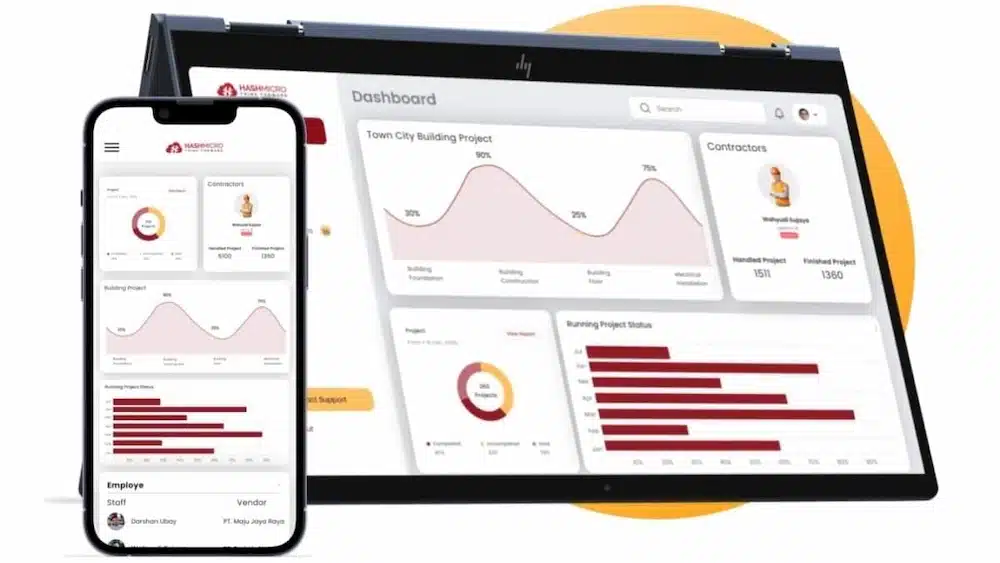In my experience, neglecting a thorough site assessment often leads to unforeseen hazards that derail even well-funded projects. This oversight causes significant delays and budget overruns before construction begins.
These hidden issues drain resources, but robust construction software can manage the data needed to mitigate them. It transforms raw assessment findings into a clear, actionable roadmap for development.
This guide covers everything you need to know to navigate your next project with confidence and foresight. Tuklasin kung paano pinalalakas ng masusing pagtatasa ng site ang iyong pagpaplano ng proyekto!
Key Takeaways
|
Table of Contents

What Is Site Assessment?
A site assessment is a comprehensive evaluation of a property used to identify potential risks and existing conditions. It investigates environmental and physical characteristics before any development occurs.
Qualified professionals, such as environmental consultants and engineers, conduct these detailed investigations. They analyze data to provide stakeholders with a clear understanding of the property’s health.
Why Site Assessment Is Important for Business Sustainability
Conducting a site assessment is a strategic investment that ensures the long-term profitability of your business operations. It acts as a vital insurance policy against future uncertainties and costly surprises.
- Mitigating financial and legal risks
Identifying contamination or instability early prevents exorbitant cleanup costs and legal liabilities later. This protects your company from unforeseen financial burdens and potential litigation. - Ensuring compliance with regulations
A formal assessment satisfies legal requirements and secures necessary permits from regulatory bodies. Compliance prevents severe penalties and government-enforced work stoppages during construction. - A foundation for strategic investment decisions
The findings provide critical data that directly influence the financial viability of a project. This information helps investors determine if the venture aligns with their risk tolerance. - Improving the efficiency of planning and project budgeting
Detailed site data allows for the creation of realistic project timelines and accurate financial forecasts. Project managers can allocate resources effectively to avoid costly last-minute changes.
Common Types of Site Assessments Used
Site assessments are tailored to address specific concerns depending on the property’s history and the project’s nature. Choosing the right combination ensures that all critical variables are effectively considered.
- Environmental Site Assessment (ESA)
An ESA identifies potential or existing environmental contamination liabilities through a phased evaluation. It assesses risks associated with hazardous substances, which is critical for real estate transactions. - Geotechnical Site Assessment
This assessment evaluates subsurface soil and rock conditions to determine stability for foundations. Geotechnical engineers drill boreholes to test soil properties, ensuring the structure’s safety. - Property Condition Assessment (PCA)
A PCA evaluates the physical condition of an existing building and its major systems like HVAC and roofing. It identifies deferred maintenance and estimates costs for necessary repairs or replacements. - Construction Site Assessment
This evaluation ensures the site logistics plan is safe, compliant, and ready for development activities by analyzing utility availability, access, and potential hazards to workers before construction starts.
Process and Phases in an Environmental Site Assessment (ESA)
The Environmental Site Assessment process follows distinct phases to evaluate risks and build on previous findings systematically. This structured approach ensures a cost-effective investigation that meets strict industry standards.
- Phase I: Initial investigation and records review
Consultants review historical records and conduct a visual site visit to identify potential contamination sources. This non-intrusive step determines if there is evidence warranting further investigation. - Phase II: Field sampling and testing
If risks are found, this phase involves collecting soil and groundwater samples for laboratory analysis. These tests confirm the presence and concentration of hazardous substances on the property. - Phase III: Contamination delineation and remediation plan
Engineers map the extent of confirmed contamination to design a specific corrective action strategy. This plan outlines the methods and costs required to clean the site to regulatory standards. - Phase IV: Implementation, monitoring, and case closure
The remediation plan is executed, followed by continuous monitoring to ensure cleanup goals are met. A final report is submitted to obtain official case closure once the site is safe.
How to Prepare for an Effective Site Assessment
Proper preparation streamlines the assessment process and ensures the consulting team delivers accurate results efficiently. Gathering necessary information upfront demonstrates transparency and helps avoid unnecessary delays.
- Collect relevant property documentation
Gather all available documents, including property deeds, title reports, and prior environmental studies. Providing this historical context helps consultants quickly identify potential areas of concern. - Clearly define the scope and objectives
Work with stakeholders to determine specific questions and standards the assessment must address. This clarity ensures the final report covers all critical aspects relevant to your project. - Select a credible and experienced professional consultant
Choose a reputable firm with a proven track record and valid licenses for similar projects. An experienced team ensures the assessment meets industry standards and provides reliable insights. - Prepare for full access to all site areas
Ensure the consulting team has safe and unrestricted access to every part of the property. Unlocking all areas prevents limitations in the report that could arise from inaccessibility.
Optimizing Site Assessment Results with Technology
Modern technology transforms dense assessment reports into dynamic insights that drive better decision-making. Integrated software platforms enable project managers to use data for planning and risk control actively.
- Centralizing assessment data with a project management system
A project management system stores reports, lab results, and photos in a single digital location. This integration eliminates data silos and ensures all stakeholders have access to the same information. - Accurate management of remediation budgets and costs
Financial management tools allow you to create detailed budgets based directly on assessment findings. Teams can track cleanup expenses against the allocated budget to prevent financial overruns. - Tracking assets and maintenance schedules post-assessment
Asset management features track recommended maintenance for site features, such as monitoring wells. This functionality documents inspections to ensure long-term compliance with safety requirements.
Read more: 16 Best Construction Accounting Software Providers for 2025
Optimize Your Project Management with Solutions from HashMicro
HashMicro Construction Software provides an integrated ERP system that automates and simplifies complex development processes. It connects data from various departments to ensure that every decision is based on accurate information.
- Budget S-Curve Management: This feature visualizes budget planning alongside actual expenditures to highlight spending trends.
- S-Curve Plan vs. Actual Project Progress: The system compares the planned project timeline against actual achievements using S-curve visualizations.
- In-Depth Budgeting Method: Users can break down budget planning into specific criteria such as job type or product groups.
- Integrated with Asset Management: This module tracks fuel consumption and operating duration to monitor asset usage on the site.
- Real-Time Project Dashboard: Aggregates data to provide a visual overview of current project progress.
Enhance your operational efficiency by automating your business processes today. Click here to try our free demo now.
Conclusion
A site assessment is an indispensable tool that serves as the cornerstone of responsible project development. It provides a data-driven understanding of conditions to mitigate risks and ensure compliance proactively.
Leveraging tools like HashMicro Construction Software transforms these insights into actionable plans. This integration ensures that financial viability and legal integrity are maintained throughout the project lifecycle.
Investing in a thorough assessment and the right technology secures the future success of your business. Try our free demo today. Ihanay sa amin ang iyong mga operasyon sa negosyo sa konstruksiyon!

Frequently Asked Questions
-
How long does a site assessment take?
The duration varies by phase and complexity. A Phase I ESA typically takes 2-4 weeks. If needed, a Phase II ESA can take an additional 4-8 weeks or more, depending on the scope of testing required.
-
What is the main purpose of a site assessment?
The main purpose is to identify potential risks and liabilities associated with a property before purchase or development. This includes environmental contamination, geotechnical issues, and the physical condition of existing structures to ensure informed decision-making.
-
Who typically performs a site assessment?
Qualified, licensed professionals conduct site assessments. Environmental consultants and scientists conduct ESAs, while geotechnical engineers perform geotechnical investigations, and building engineers or architects conduct PCAs.
-
What are the three phases of an environmental site assessment?
The three main phases are Phase I (records review and site visit), Phase II (physical sampling and testing to confirm contamination), and Phase III (delineating the extent of contamination and creating a cleanup plan).







































